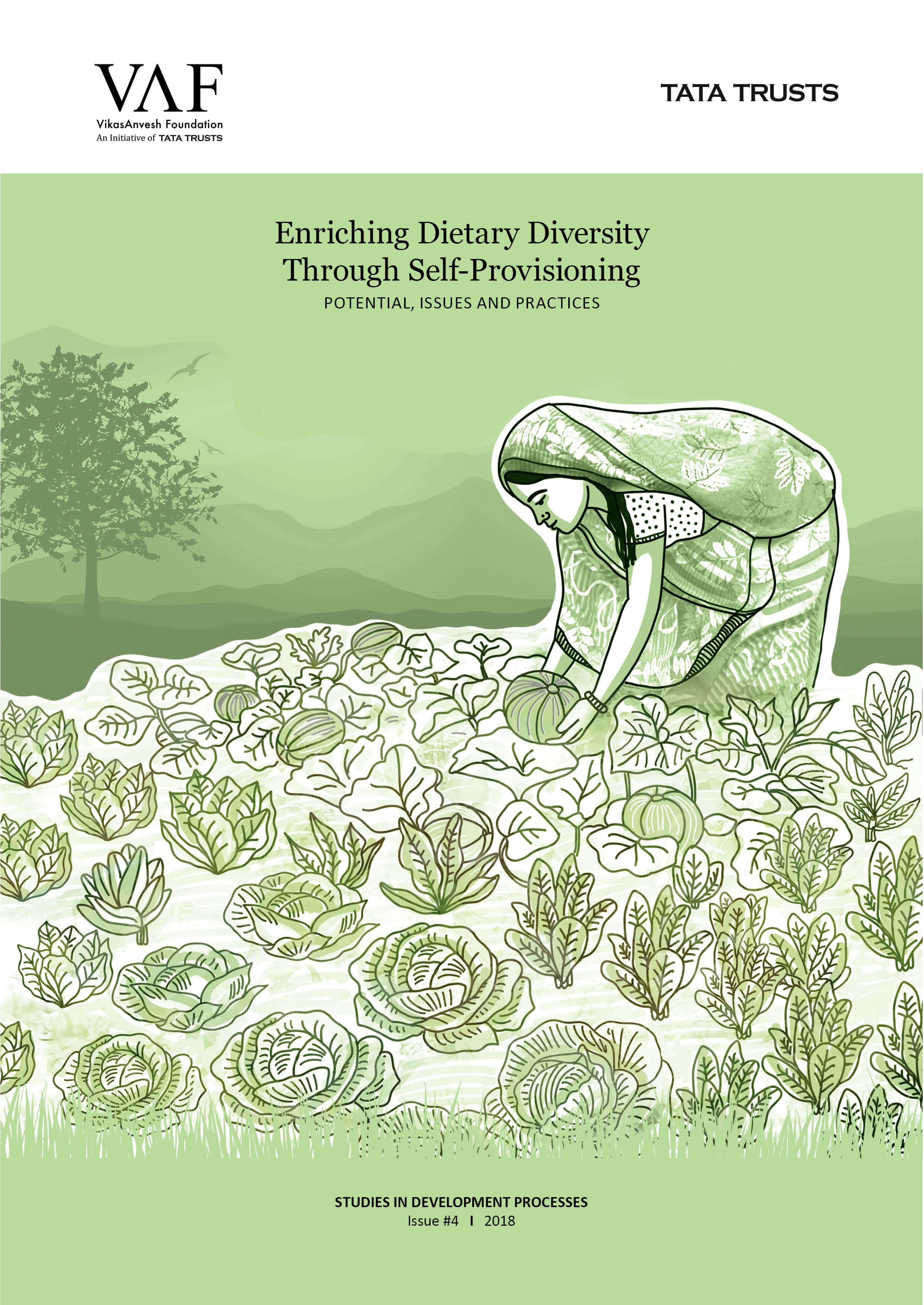Studies in Development Processes Issue#4
Authors : Sanjiv J Phansalkar and Soumi Kundu
Dietary diversity and increased consumption of fresh vegetable produce is known to be beneficial in terms of augmenting the intake of micro-nutrients and enriching diets at home. Studies elsewhere show a possible association between high dietary diversity and low malnutrition. Building on a field work based research study done by one of the authors of the present note; six methods of self-provisioning for dietary diversity are discussed and briefly compared here. In relatively well endowed farm households, the tradition of growing a number of vegetable crops for home consumption continues to the present day. Pata system popularized by Dilasa Sanstha with the help of Tata Trusts and other supporters encourages farm households to devote 3-4 rows of the land to growing a combination of vegetable and leguminous crops; whose produce is consumed at home. Mahan Trusts modified this to create a system of what they called Nutrition Farms, where the empty rows between rows of cotton ear used to plant vegetable, legume and oilseeds crops. AKSRP(I) scaled a nice model of landless gardens, in which up to 60 plants od a range of vegetable crops are grown in 8 gunny sacks. This is ideally suited to ultra poor and landless homes. AME Foundation worked to revive the tradition of kitchen gardens either in tiny homesteads or along the periphery of homes in high land villages in Dharmapuri district. Transform Rural India Foundation and PRADAN have been engaged in transplanting the idea of pata in unused high lands (the tands) or homesteads in Jharkhand. Each of these methods has reached and benefitted thousands of participating homes in augmenting the supply of homegrown vegetable produce to enrich their diets; save on out of pocket costs and avoid the drudgery of trudging to markets for buying vegetables. Promotion of any of the five interventions in a region would need to be decided on the basis of land availability and agro-climatic conditions of the chosen region. The most important driver of the program seems to be access to conveniently prepared packet of seeds in quantities suited to landholdings as well as home demand for the plant. Experience shows that farm households are willing to pay for the packets and thus the program is opex neutral. The chief drawback of the system is the low importance attached to it by families, interveners as well as donors since these methods do not produce any measurable income enhancement. The most important lesson that emerges is that it is possible to boost self-provisioning for dietary diversity by incremental consumption of fresh plant produce at low investments and across a wide geographic area. This lesson is so obvious and clear that rigorous assessments of donor costs and investments vis a vis gains in dietary diversity demonstrated by a concrete verifiable metric would seem to be an over-kill. This note recommends that a program of self-provisioning for dietary diversity deserves to be created and supported across the country since it is a low cost and sure way of promoting dietary diversity with favourable nutritional outcomes.

